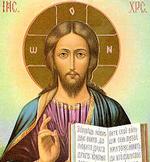Catholic World News News Feature
AFRIKAANS-SPEAKING CATHOLICS IN THE RAINBOW REPUBLIC November 14, 1996
by Theresa Currin
South Africa, in the late 1950s, was heading toward a referendum that would turn it into a Calvinistic-inspired republic, take the nation out of the British Commonwealth and give its statutory blessing to the social, moral, and economic near-disaster called apartheid. Social segregation and inequality is as old as society, but the predominantly Afrikaans ruling party gave it a new twist by backing up its 'rightness' with an inward-looking Calvinistic interpretaton of the Bible.
A small group of Dutch Dominicans and a few Catholic laymen, headed by a Johannesburg advocate, a convert from Judaism, felt that the task of the Church in this situation was: (1) to present Catholic social teaching to Calvinistic leaders and professional people in their own language, Afrikaans; and (2) to concentrate and develop pastoral work among the largely Colored (that is, racially mixed) Afrikaans-speaking Catholics, who had been much neglected in favor of the mission to the blacks.
And so the Afrikaans Apostolate and the journal, Die Brug (The Bridge) were born. The latter flourished effectively for a number of years; the former didn't make it further than adolescence. The return of the Dutch Dominicans to Holland, and the untimely death of the advocate-- now a judge-- in the early 1960s, brought Die Brug to an end. But the ideas had been sown, and were quietly doing their work among individual lay people, priests and bishops, including the late Cardinal Owen McCann of Cape Town.
In December, 1983, 20 years later, the daughter of the late judge, turned up on the doorstep of a South African Cathedral, whose administrator, Father John Newton Johnson, was an Afrikaans-speaking convert from the Dutch Reformed Church. This was their first encounter. What followed was the setting up of a translation and editorial team drawn from Afrikaans Catholics of all races across the length and breadth of Southern Africa, under the aegis of the cardinal and the chairmanship of Bishop Eddie Adams of Oudtshoorn, the heartland of Afrikanerdom. Bishops of other Afrikaans dioceses were drawn in, with the ultimate involvement of 80 percent of all the Southern African dioceses-- also including the dioceses of Namibia.
During the next nine years, the first Afrikaans Sacramentary and full Lectionary were published and put into use throughout the country. Far flung missions, in particular in Namibia and the Cape Province, which had been individually putting out catechisms, prayer and hymn books, calenders, and leaflets over the long lean years, were drawn together under one umbrella. The work of small, isolated Afrikaans Catholic communities was given wide recognition. A quarterly newsletter, Laudetur, went into circulation, reaching interested readers as far as Chicago, and Eindhoven and Zwolle in Holland. Laudetur carried the Protea, the national flower of South Africa, with the cross, as its emblem.
Regular bi-annual meetings took place in Cape Town, with delegates from all over southern Africa, including Anglicans involved in Afrikaans pastoral work. Dialogue was established with the Bible Society (under the auspices of the Dutch Reformed Church) on matters of linguistics and semantics in Afrikaans usage; also with Afrikaans professors and religious leaders. On one unforgettable day in 1991, two Dutch Reformed ministers of the Bible Society were welcomed to the Cape Town meeting by the cardinal. The Calvinist spectre of 'die Roomse Gevaar' (the threat of the Roman Catholic Church) had been laid to rest.
In 1992, the Afrikaans Apostolate took over the Oudtshoorn Cathedral with its complex of buildings, to serve the pastoral needs of the geographically largest Catholic diocese in South Africa, to continue and centralize much of the publishing work and to train workers for this apostolate. Now, four years later, the community has been given full Oratory status under the direction of Father Johnson. It has its own priests, brothers and seminarians, two of whom recently spent a year training at the Ontario Oratory.
The frontispiece of the Afrikaans Sacramentary represents 'Our Lady of Good Hope'-- named for the famous Cape-- with her cloak spread across Southern Africa, and holding a chalice in the form of a Protea. Also shown in the painting is the Southern Cross constellation, the Portuguese padrao (the pilgrims' cross of Vasco da Gama, the first Christian emblem planted on these shores) and a little Springbok-- the sports emblem of South Africa, used here to indicate something young and lively. Limited copies of this illustration were presented to to Mother Teresa and her sisters in South Africa, the Americas, and Australia, by her South African workers.
Today, Afrikaans is, surprisingly, alive and well. No longer seen to be the language of the oppressor, it has become a vehicle for the poetry and theater of a growing, new intellectual class whose mother tongue it is. Afrikaans Catholics, though a minority, are now vocal, and spread across all the races. Roughly 75 percent are Coloureds, largely in a low income to very poor sector; whites come mostly from the professional sector; blacks are spread across the income structure.
How strange that the Afrikaans Catholic pioneering movement of the early Apartheid years should suddenly come into fruition during the turbulent death-throes of apartheid. Or perhaps not so strange: for its reappearance in the 1980s coincided with an increasing change of heart among many Calvinist thinkers and clerics, and a disenchantment among people of good will-- including the Afrikaners-- with an immoral and economically strangling system.
There was a spiritual vacuum, which the English-speaking Church was too politicized to fill, but the Afrikaans Apostolate was not so geared. It could communicate through a common tongue. It did-- and it filled the vacuum.






